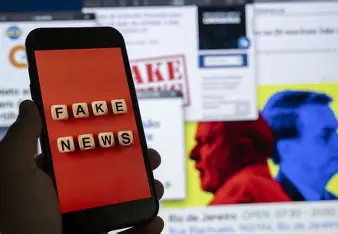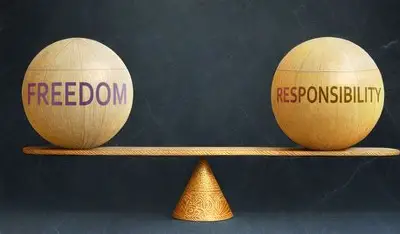Table of Contents
In today’s digital age, the power to speak, share, and create has never been greater. With just a smartphone and an internet connection, anyone can become a creator, a journalist, or an influencer. Social media, blogging, video platforms, and other online spaces have opened doors for millions. But along with this freedom comes a growing problem — fake content. As false news, AI-generated misinformation, and manipulated videos spread quickly, the question becomes more urgent: where should we draw the line between freedom and fake in digital content?
This debate is not just about laws or platforms. It touches the core of our society — truth, trust, safety, and liberty. Let’s dive into this growing issue and ask the seven most important questions that shape the future of online content.
1. What Is Digital Freedom, and Why Does It Matter?
Digital freedom means the right to express ideas, beliefs, opinions, and creativity online without censorship or fear. It includes freedom of speech, the right to access information, and the ability to connect with others. This freedom has given voice to the unheard, powered social movements, and made the internet a global platform for learning and change.
Without digital freedom, many powerful conversations would never happen — from climate change awareness to political activism and mental health support. But this same space that allows truth to rise also opens the door to lies, hate, and manipulation.
2. How Big Is the Problem of Fake Content?
Fake content online is growing at a dangerous speed. According to several studies, more than 60% of internet users have come across false or misleading information. Deepfakes, AI-generated articles, edited videos, and fake news websites are becoming harder to detect.
Social media platforms are full of posts that look real but are not. In 2024, fake content influenced elections, spread medical myths, and even caused panic in some cities. Some creators use fake news to gain followers or money, while others use it to push political or social agendas.
3. Can Fake Content Be Stopped Without Killing Free Speech?
This is the heart of the problem. If governments or platforms start banning content to stop fakes, how do we make sure they don’t silence real voices too? This is why many people worry that content moderation can lead to censorship.

But leaving everything unfiltered is also dangerous. Platforms like Facebook, YouTube, and X (formerly Twitter) face daily pressure to act against false content without crossing the line of freedom. It’s a tightrope walk — one that often leads to controversy no matter which side they choose.
4. Who Decides What Is True or False?
One of the biggest challenges in this debate is deciding who gets to be the judge. Is it the government, the platforms, or the users themselves? What one group sees as truth, another might call bias or propaganda.
Take the example of health content during COVID-19. Some early information shared by professionals was later proven wrong. Was that fake or just outdated science? The answer is not always clear, and the wrong decision can hurt both truth and freedom.
5. What Role Do Tech Platforms Play in This Battle?
Major digital platforms are under massive pressure to fight fake content. Some have added fact-check labels, AI tools to detect deepfakes, and community guidelines to stop dangerous posts. But critics say they don’t do enough, or sometimes do too much, especially when it affects political or social debates.
Meta, Google, TikTok, and others have also been accused of having bias, acting too late, or making secret decisions about what stays online. Some countries are now pushing for clear laws to control digital platforms, but others warn that this may create internet surveillance or silence opposition.
6. What Can Governments Do Without Creating Censorship?
Governments have a responsibility to protect citizens from harm, but not to control what people say. Striking this balance is difficult. Countries like India, the United States, and several in Europe are now passing digital laws to fight fake content.
Some laws demand that platforms take action against false news within 24 hours. Others ask them to publish transparency reports. But there are also fears that such rules can be misused to target journalists, critics, or activists.
A strong digital policy should protect free speech while punishing those who knowingly create and spread lies that can harm society. The goal is responsible freedom — not total control or total chaos.
7. How Can We as Users Be Smarter About Content?
While platforms and governments fight this war, the real power lies with the users. If we learn how to spot fake content, check sources, and think critically, we can help clean up the internet ourselves.

Some easy steps include:
- Check the source before believing or sharing content
- Look for multiple reports from trusted outlets
- Question emotional or shocking posts, especially if they come without proof
- Avoid spreading content that feels extreme or one-sided
- Use fact-checking websites when in doubt
Being aware is the first step. Schools, colleges, and communities must also teach digital literacy so that people know how to handle the information overload of the modern world.
The Way Forward: Balance, Transparency, and Responsibility
The internet will never be perfect, and fake content is likely to remain a challenge. But that doesn’t mean we stop trying. The solution lies not in shutting down freedom or allowing lies to win, but in finding a strong balance between the two.
This means:
- Clear rules from governments that protect rights but punish misuse
- Transparent decisions from tech platforms on content policies
- Awareness among users to verify, report, and avoid fake content
Digital freedom is a gift — but like all gifts, it comes with responsibility. We must protect the right to speak and create while also guarding the truth. The line between freedom and fake may be hard to draw, but with honesty, effort, and smart action, it can be done.
Final Thoughts
The internet is one of the greatest inventions of our time. It can educate, connect, inspire, and empower. But when fake content spreads unchecked, it threatens everything — from personal trust to national safety. As creators, platforms, governments, and users, we all have a role in shaping a digital space that is both free and fair.
So, where should we draw the line between freedom and fake? The answer lies not in a rulebook, but in values — truth, trust, and responsibility.











Leave a comment